Braulio Carrillo National Park Landscape Scenes and Plants
16 December 2005
This page last updated 12 January 2006
The Braulio Carrillo National Park is located on the Cordillera Central in the center of Costa Rica. It was named for Costa Rica's third president, who ruled during the 1800s, and covers approximately 113,415 acres. The topography is has high relief and the mountains are densely vegetated with wet tropical rain forest. Higher elevations (but not the highest) of this park contain "Cloud Forest" but access is very limited. Clear days are very rare. See the map of the "Costa Rica Home" page for the park. Basic information about the park can be found at this Info Costa Rica website, with a simple but nice map of the park at the Costa Rican Tourism website. More information can be found at this Moon Handbooks website. The park is habitat for at least 6,000 plant species, and 333 species of bird, and ranges in elevation from 36 m at La Selva in the Caribbean lowlands to about 2,906 m (9,535 ft) above mean sea level on Volcan Barva.
Our Caravan tour took us through the Braulio Carrillo National Park (Parque Nacional Braulio Carrillo) along highway 32. We stopped at the Atlantic Rain Forest Aerial Tram, and took a tour of the forest just outside the park on a 475-hectare (1,200-acre) private preserve next to the park boundary. This webpage includes two short videos, one while on the aerial tram, and the other watching a trail of Leafcutter Ants. It is here that we saw the Pale-billed Woodpecker, seen and heard on by Costa Rican Butterflies page (link below).
CounterData.com

australian visas Counter
All photos copyrighted by David L. Magney 2005
Links to other Costa Rica photo pages
San Jose Area Photos
Poas Volcano National Park Area Photos
Tortuguero National Park Area Photos
Tortuguero National Park Area Photos 2
Grecia Metal Church and Sarchi Photos
Arenal Volcano Area Photos
Jaco Area Photos
Cloud Forest Photos
Manuel Antonio National Park Photos
Rio Frio-Los Chiles Area Photos
Costa Rican Bird Photos
Costa Rican Butterfly Photos
Costa Rican Banana Plantation Photos
Costa Rica Home
Photos of Scenes of the tropical rainforest in the Braulio Carrillo National Park
A very rare clear view of the mountains, facing west, of the Barva Volcano massif. On the right is my ticket to ride the Rain Forest Aerial Tram.
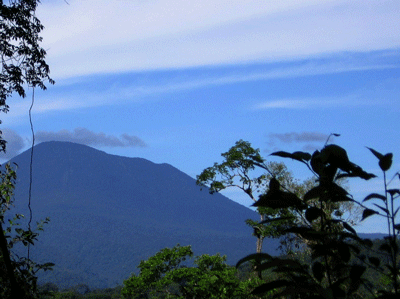
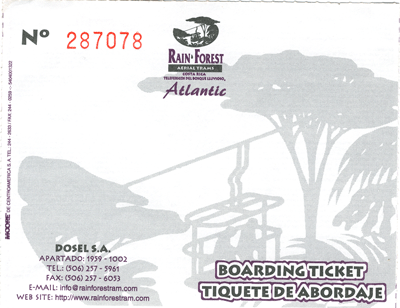
Here is a video clip of our aerial tram ride through forest canopy. It will play as soon as it is loaded. Right click your mouse to access "Play" again. You get to hear our guide, Adrian, discussing the brocolli tree with Nancy asking questions. These tall and dominant trees are also called Ceiba or Kapok (Ceiba pentandra), and is a member of the Mallow family (Malvaceae, formerly included in the Bombacaceae). This genus includes 10 species, almost all of neotropical origin. The word ceiba is believed to mean "canoe", and the trunk of this tree is often used to make dugout canoes.
![]()
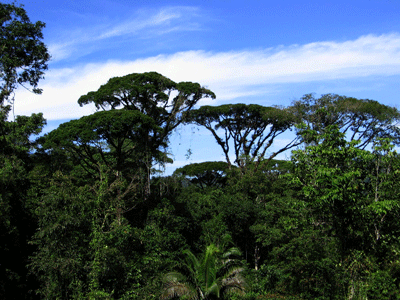
Ceibo, Kapok, or Broccoli tree (Ceiba pentandra) - now in the Malvaceae (Mallow family).
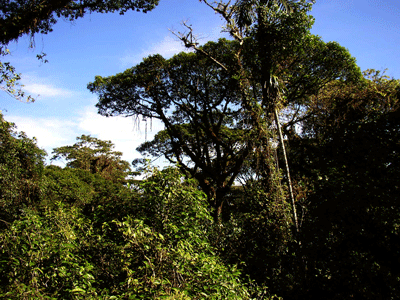
This is Highway 32, which is the main road between the Central Valley (San Jose) and Limon on the Caribbian coast. We are looking west, on the bridge over the Rio Sucio (Dirty River).
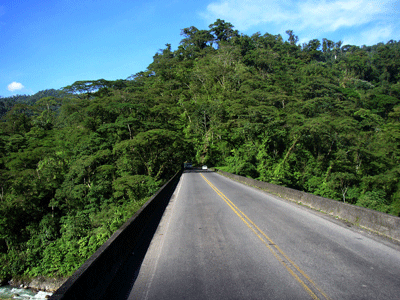
Here is where Highway 32 (Guapiles Highway) passes over the Rio Sucio (translated as "Dirty River"), just downstream of its confluence with the Rio Hondura, a clear water river draining the mountains of Braulio Carrillo National Park. The Rio Sucio gets its name from the color of the water, a result of the sulfur-laden sediments carried down from Volcan Irazu.
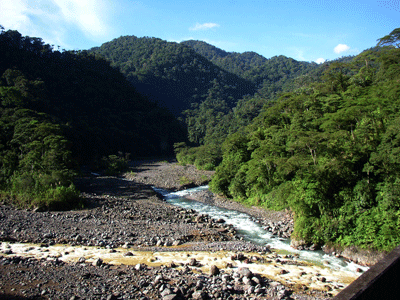
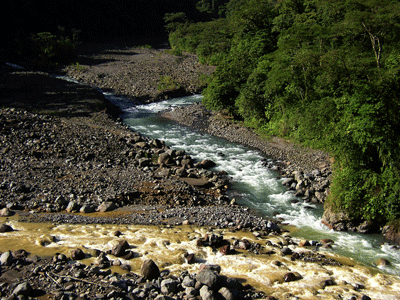
Our guide Adrian explains about the Traveler Palm, how it can "walk" a couple of meters to get more sun (out of the shade of a neighboring tree).
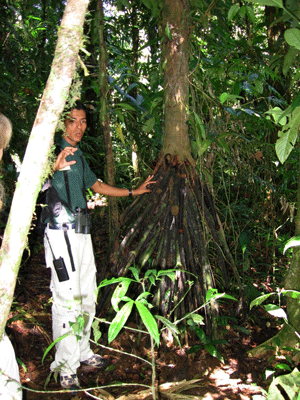
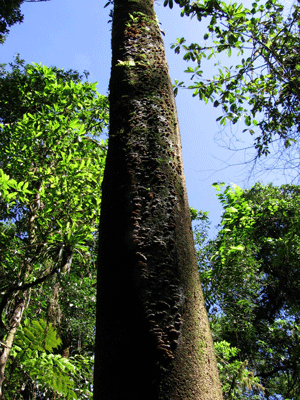
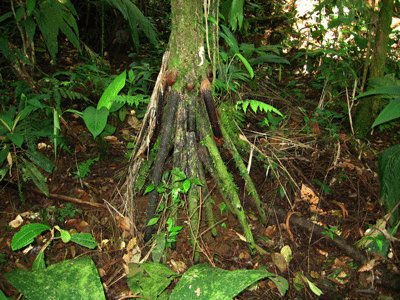
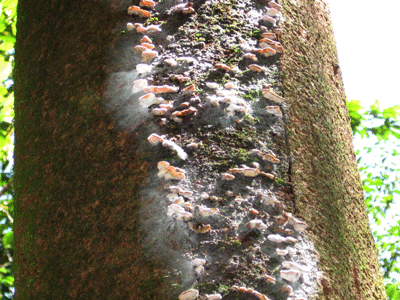
A palm (on the left) and a Philodendron (on the right) climbing up a canopy tree.
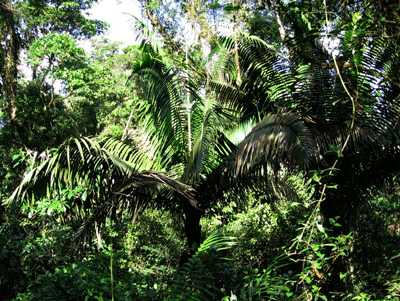
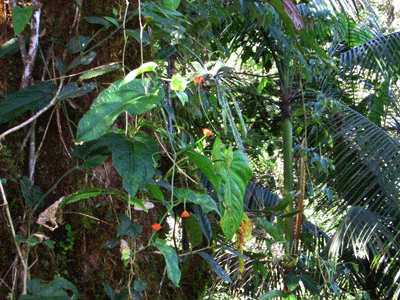
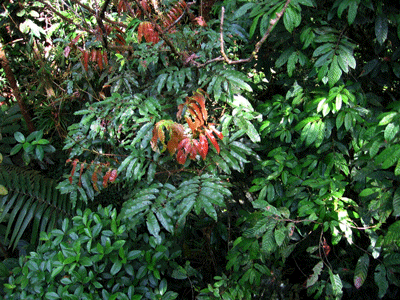
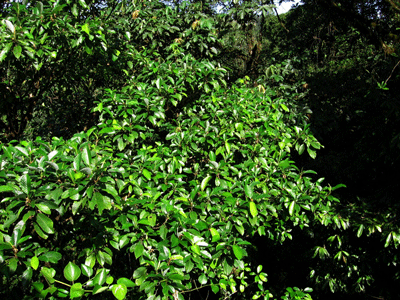
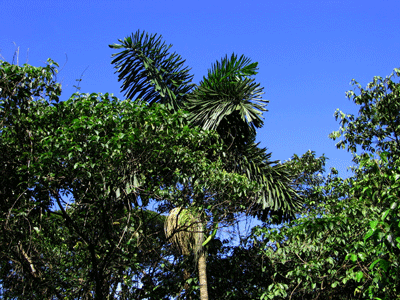
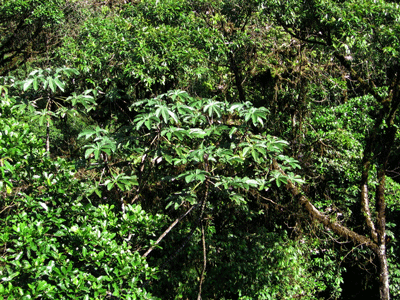
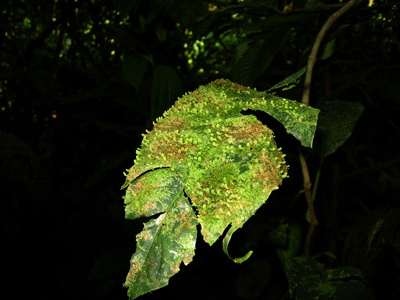
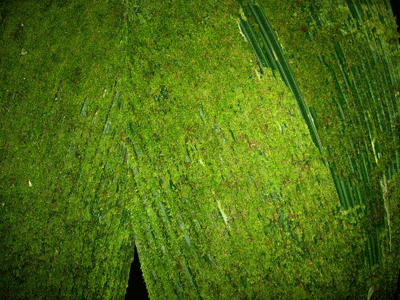
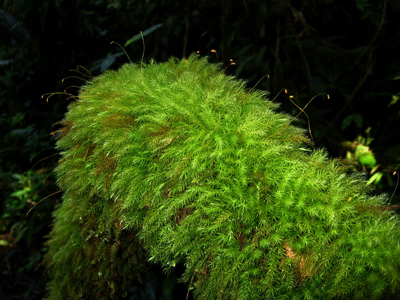
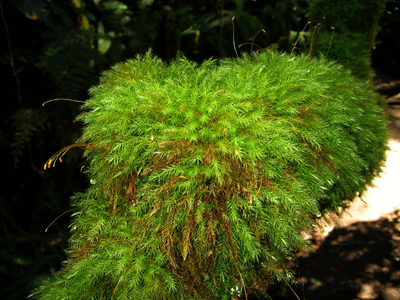
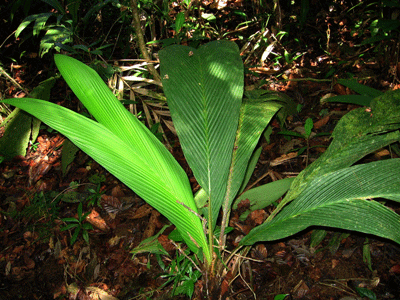
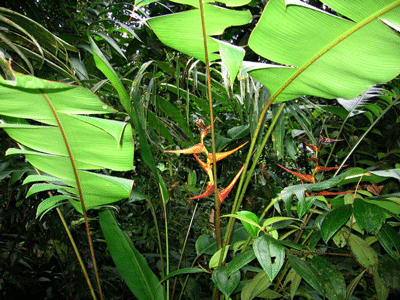
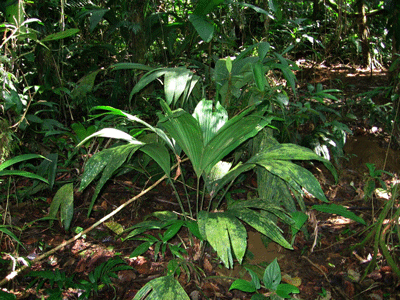
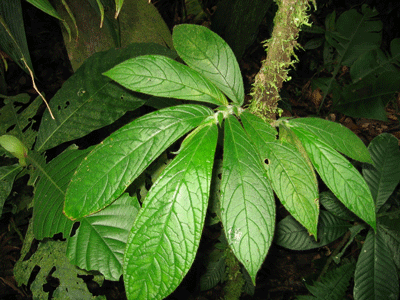
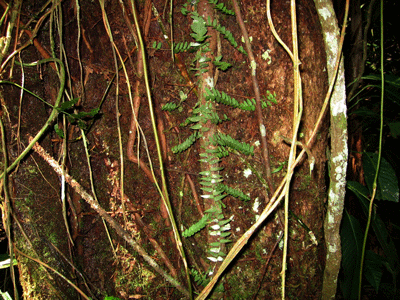
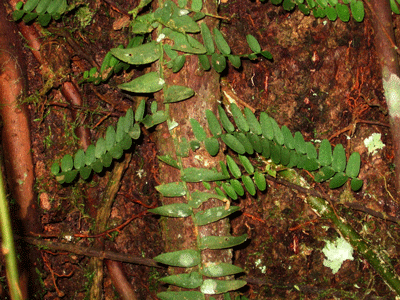
Leafcutter Ants hauling off their harvest to their nest. The pieces of leaves are used to cultivate fungus that grows in the decaying leaves, which the ants feed off.
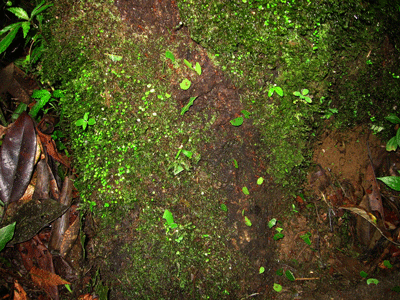
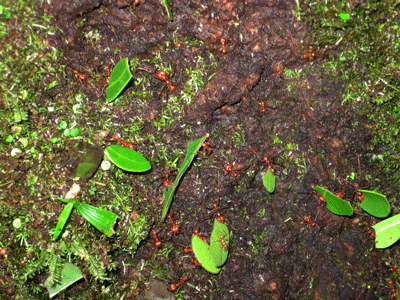
Video clip of ants. It will play as soon as it is loaded. Right click to access "Play" again. Our tour guide, Adrian, talks briefly about the ants. These ants use the bits of leaves and flowers they harvest to cultivate specific species of fungus (mushrooms), which they then eat.
![]()
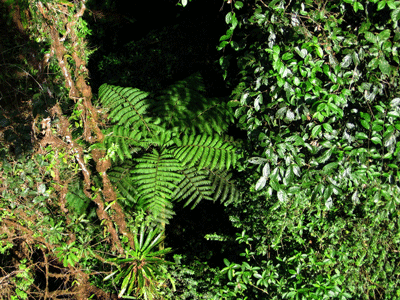
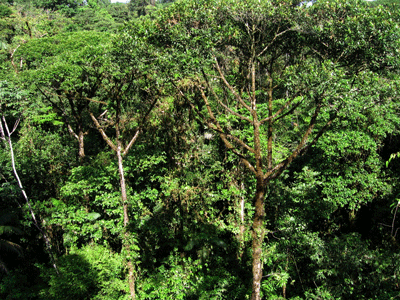
Here is a Golden Thread Spider (left) and tiny native bees (right).
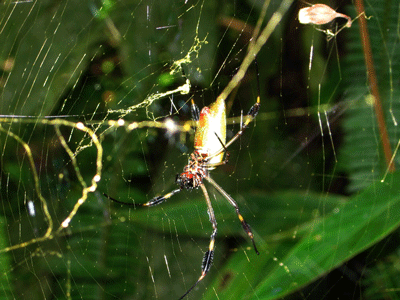
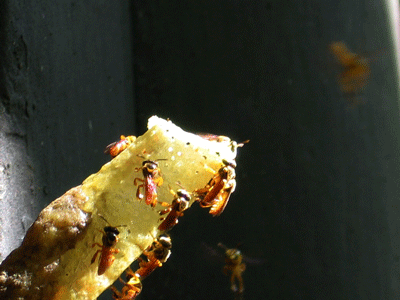
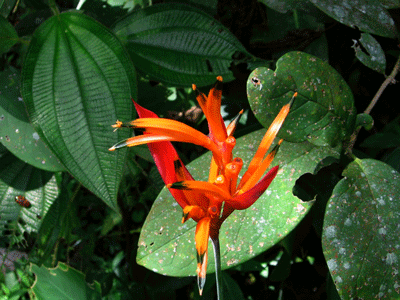
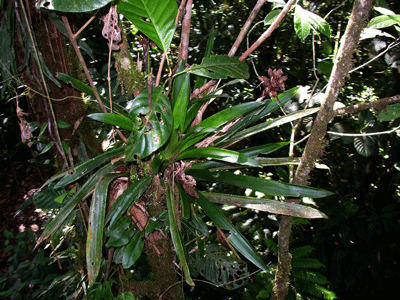
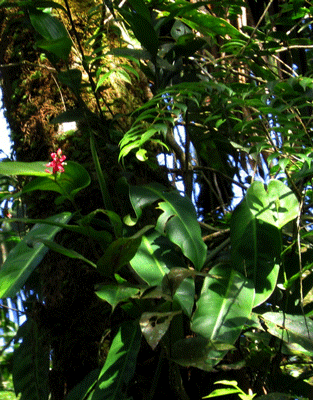
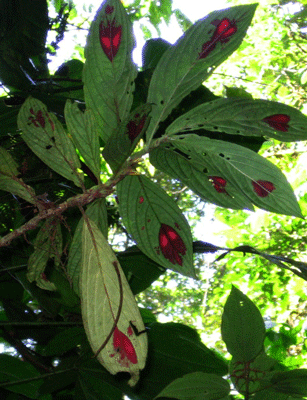
Here is a video clip of aerial tram ride through forest canopy. It will play as soon as it is loaded. Right click your mouse to access "Play" again. You get to hear Heidy and Nancy discussing what they are seeing, but you might have to turn the volume up.
![]()
Costa Rica Home
Photography Home Page
Photography Site Map
DMEC Home




































